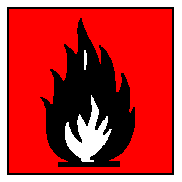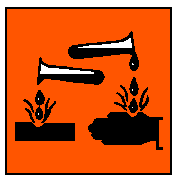International Chemical Safety Cards
| LITHIUM | ICSC: 0710 |
LITHIUM |
 |
 |
| TYPES OF HAZARD/ EXPOSURE |
ACUTE HAZARDS/ SYMPTOMS |
PREVENTION | FIRST AID/ FIRE FIGHTING |
| FIRE | Flammable. Many reactions may
cause fire or explosion. |
NO open flames, NO sparks, and
NO smoking. NO contact with water. |
Special powder, dry sand, NO
other agents. NO water. |
| EXPLOSION | |
|
In case of fire: cool drums,
etc., by spraying with water but avoid contact of the substance with water. |
| EXPOSURE | |
AVOID ALL CONTACT! |
|
| INHALATION | Burning sensation. Cough.
Laboured breathing. Shortness of breath. |
Ventilation (not if powder),
local exhaust, or breathing protection. |
Fresh air, rest. Half-upright
position. Refer for medical attention. |
| SKIN | Redness. Pain. Blisters. |
Protective gloves. Protective
clothing. |
Remove contaminated clothes.
Rinse skin with plenty of water or shower. Refer for medical attention. |
| EYES | Redness. Pain. Severe deep
burns. |
Safety goggles, or eye
protection in combination with breathing protection. |
First rinse with plenty of water
for several minutes (remove contact lenses if easily possible), then take to a doctor. |
| INGESTION | Abdominal cramps. Abdominal
pain. Burning sensation. Nausea. Shock or collapse. Vomiting. Weakness. |
Do not eat, drink, or smoke
during work. |
|
| SPILLAGE DISPOSAL | STORAGE | PACKAGING & LABELLING | ||
| Consult an expert! Collect
spilled substance into dry metallic sealable container, carefully absorb remainder in dry
sand or dry inert absorbent. Do NOT wash away into sewer. (extra personal protection:
complete protective clothing including self-contained breathing apparatus). |
Fireproof. Separated from acids,
halons and other incompatible materials (see chemical dangers). Cool. Dry. Keep under
mineral oil. |
Airtight. F symbol C symbol R: 14/15-34 S: 8-43 UN Hazard Class: 4.3 UN Packing Group: II |
||
| SEE IMPORTANT INFORMATION ON BACK | ||||
|
||||